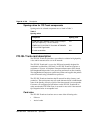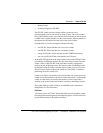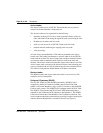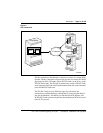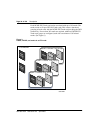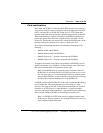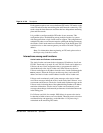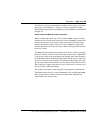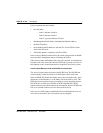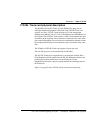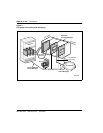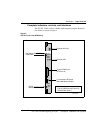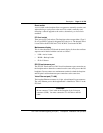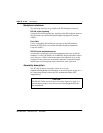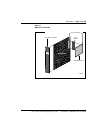
Page 36 of
378
Description
553-3001-202 Standard 1.00 April 2000
Critical synchronized data includes:
• the card index:
– index 1 indicates Leader 0
– index 2 indicates Leader 1
– index 3 or greater indicates Follower
• the Management MAC address (motherboard Ethernet address),
• the Node IP address,
• the individual card IP addresses and card TNs for all ITG ISL Trunk
cards in the ITG node.
• D-Channel number, card density and First CHID.
In the event of a Backup Leader failure, the Leader card generates an SNMP
trap to the MAT management station, indicating this failure.
If the Active Leader and Backup Leader are reset, removed, or disconnected
from the LAN at the same time, the entire ITG node is put out-of-service. If
this situation occurs, manual intervention is required to recover the system.
Active Leader/Backup Leader and DCHIP card interaction
The Active Leader checks the status of the DCHIP card. The DCHIP card
must constantly inform the Leader of its DCH status and its card status.
When a DCHIP ITG Trunk card failure occurs, the associated trunks’ states
appear busy to the Meridian 1, so the trunks will not be used for calls. This
blocks the normal software action of reverting to analog signaling when an
ISL DCH fails. If either end’s DCHIP or DCH connection fails, ISDN
protocol features across the IP network do not function. When a DCHIP card
fails, its associated Followers are also removed from service.
In the case of a DCH failure, established calls are maintained; however, no
new calls can be made. Calls in a transient state are dropped.



